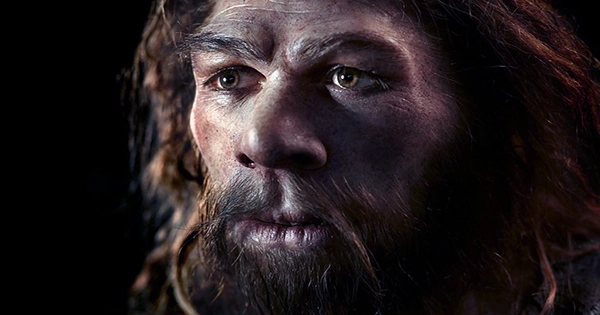Since they were first found in 1856, neanderthals have represented our own humanity. Our perceptions of things have been molded to meet our cultural fads, social mores, and scientific norms. From ill specimens through ape-like lumbering cousins to modern humans, they have evolved.
We now know that Homo neanderthalensis were very similar to us and that we even interbred with them on several occasions. But why did they become extinct while we endured, thrived, and eventually conquered the planet?
Neanderthals most likely descended from Homo heidelbergensis, an older progenitor, around 400,000 years ago. They spread throughout a region extending from the Mediterranean to Siberia and enjoyed tremendous success. They had brains that were on average larger than those of Homo sapiens and were very sophisticated.
They could control fire to cook food, hunt large game, gather herbs, mushrooms, and seafood, make composite tools, dress themselves in animal skins, make beads from shells, and chisel symbols into cave walls. They provided for their young, old, and feeble, built shelters for safety, survived severe winters and hot summers, and buried their dead.
Over the course of tens of thousands of years, our ancestors did interact with neanderthals on a number of times, and the two species coexisted on the European continent for at least 14,000 years. Even so, they mated with one another.
Dying out of a species: The main distinction between Neanderthals and ourselves is that they vanished from the planet roughly 40,000 years ago. Although we are yet unable to pinpoint the exact cause of their demise, we believe that a number of things likely contributed to it.
First off, the temperature during the last ice age was extremely erratic, changing from cold to warm and back again, placing stress on the availability of animal and plant food supplies and necessitating frequent adaptation on the part of Neanderthals. In addition, the total number of Neanderthals was never higher than a few tens of thousands.
Unlike Homo sapiens, who had groups of up to 150 people, they lived in smaller groups of five to fifteen people. These few, isolated Neanderthal groups might have become genetically unstable over time.
Third, there was competition from other predators, especially the modern human populations that first appeared in Africa around 60,000 years ago. We hypothesize that numerous Neanderthals may have merged with the bigger groups of Homo sapiens.
The evidence: Tens of thousands of years later, we can still study the various remnants that Neanderthals left behind. A large portion of these remains are on display at the special exhibition we helped to curate at the Natural History Museum of Denmark. In the last 150 years, we have gathered prehistoric bones, stone and wooden tools, relics, and cemeteries. Now, using prehistoric DNA, we have sequenced their genome. Neanderthals are thought to be our closest extinct ancestors because their DNA appears to be 99.7% similar to that of modern humans.
Since there is evidence that certain Neanderthals evolved pale complexion and red hair long before Homo sapiens, the Neanderthal DNA also aids in our understanding of their appearance. The many genes that modern humans and Neanderthals share are connected to everything from the capacity to talk to the ability to taste bitter foods.
Additionally, our understanding of human health has grown. For example, some Neanderthal DNA that may have benefited humans tens of thousands of years ago today appears to cause problems when paired with the contemporary western lifestyle.
There are correlations to drinking, obesity, allergies, blood clotting, and depression. Recent research has raised the possibility that a Neanderthal gene mutation could enhance the likelihood of COVID-19 infection leading to significant consequences.
putting a mirror up: The Neanderthals had no idea what was coming, much like the dinosaurs. The distinction is that a massive meteorite impact from space caused the extinction of the dinosaurs. The extinction of the Neanderthals took place over time. They ultimately lost their world, a cozy place they had successfully lived in for millions of years that gradually started to turn against them until life itself became unsustainable.
Neanderthals now have a different function in that regard. We recognize ourselves in them. They had no choice but to carry on down the path that ultimately resulted in extinction since they had no idea what was happening to them. On the other hand, we are keenly conscious of both our predicament and our impact on the earth.
Sixth mass extinction is imminent due to human activities that is altering the climate. We can take stock of the situation we’ve gotten ourselves into and take action to fix it.
We need to get our act together and cooperate to create a more sustainable future if we don’t want to become extinct like the Neanderthals. We should never take for granted that we exist, as the extinction of the Neanderthals teaches us.













